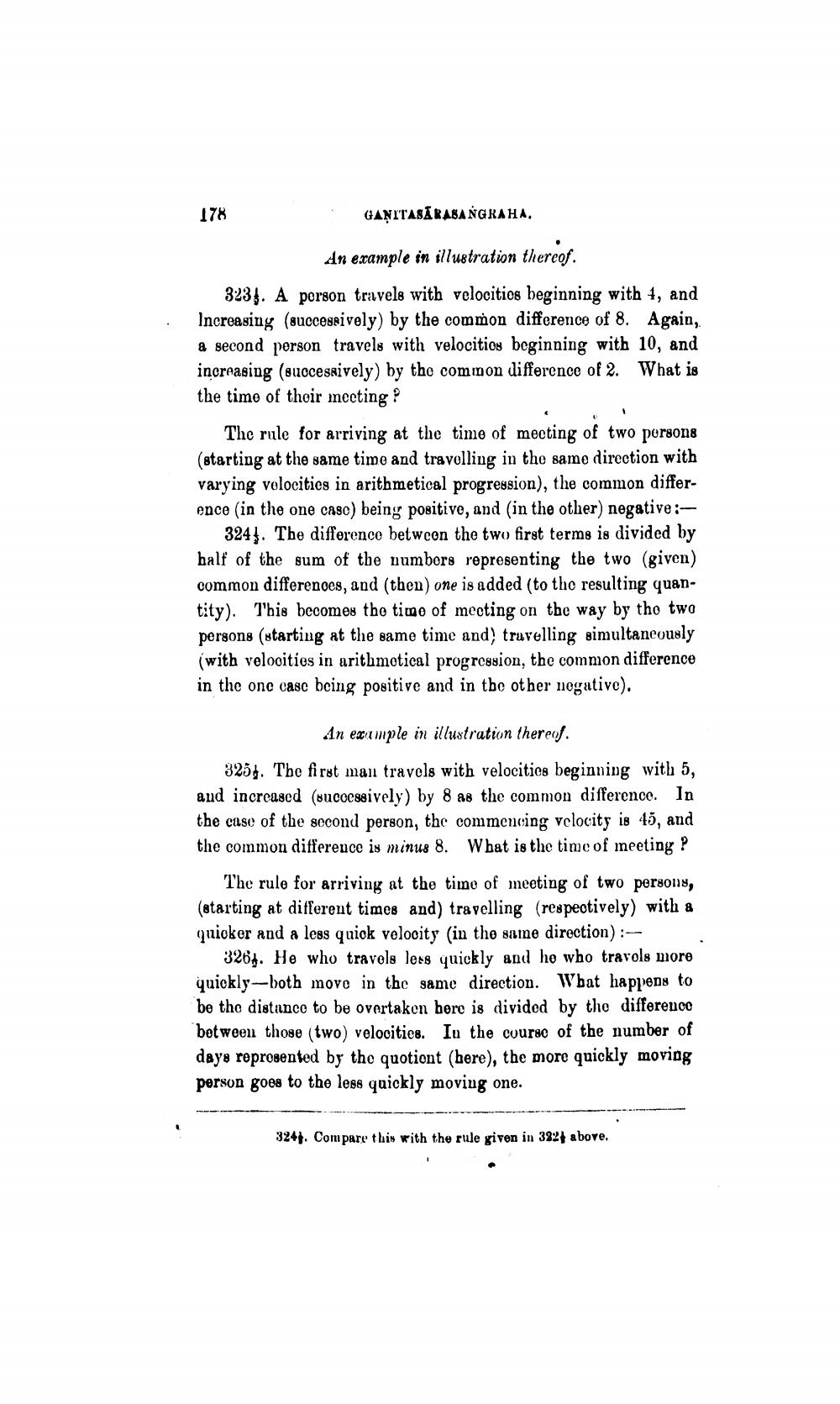________________
178
GANITASĀRASANGRAHA,
An example in illustration thereof.
3239. A person travels with velocitios beginning with t, and Increasing (successively) by the common difference of 8. Again, a second person travels with velocitios beginning with 10, and increasing (successively) by the common difference of 2. What is the time of their meeting?
The rule for arriving at the time of meeting of two persons (starting at the same time and travelling in the same direction with varying velocities in arithmetical progression), the common difference (in the one caso) being positive, and in the other) negative:
3244. The difference between the two first terms is divided by half of the sum of the numbers representing the two (given) common differenoes, and (then) one is added (to the resulting quantity). This becomes the time of meeting on the way by tho two persons (starting at the same time and) truvelling simultaneously (with velooities in arithmetical progression, the common difference in the one casc being positive and in the other negative).
An example in illustration thereof.
325. The first man travels with velocities beginning with 5, and increased (sucocesively) by 8 as the common difference. In the case of the second person, the commencing velocity is 45, and the common difference is minus 8. What is the time of meeting ?
The rule for arriving at the time of meeting of two personis, (starting at different times and) travelling (respeotively) with a quioker and a less quick velocity (in the same direction) :
3264. He who travels less quickly and he who travols more quickly-both move in the same direction. Wbat happens to be the distance to be overtaken here is divided by the differenco between those two velocities. Iu the course of the number of days reprosented by the quotiont (here), the more quickly moving person goes to the less quickly moving one.
324). Compare this with the rule given in 322above.




